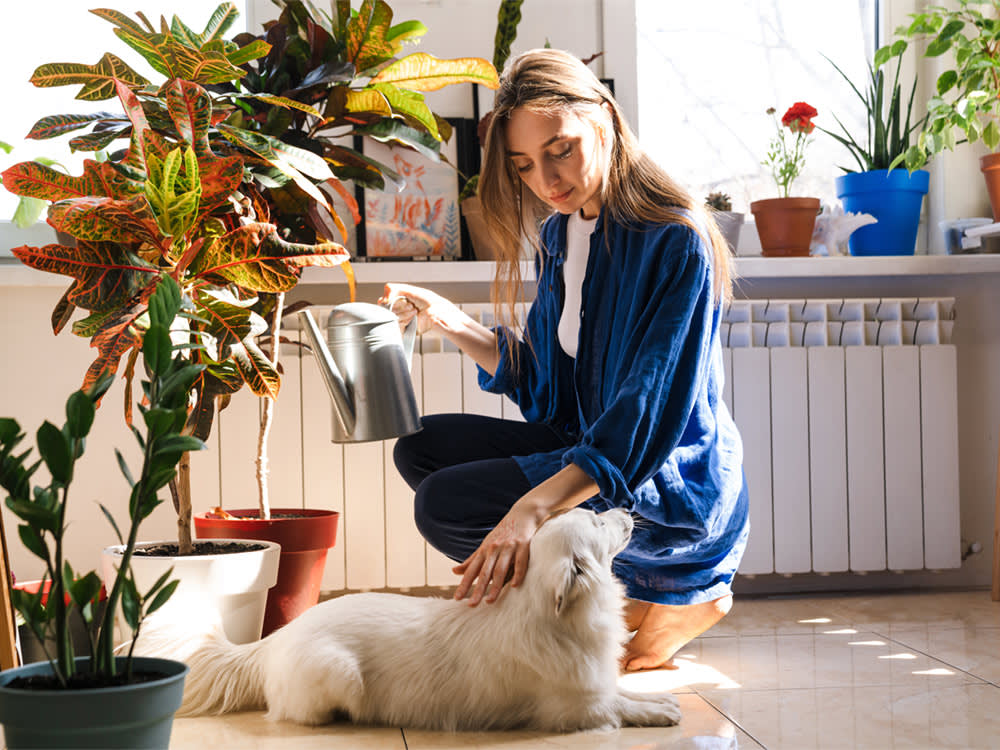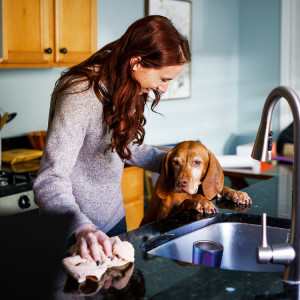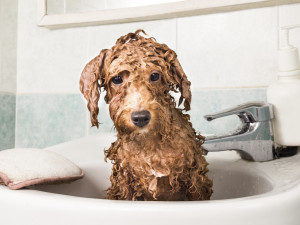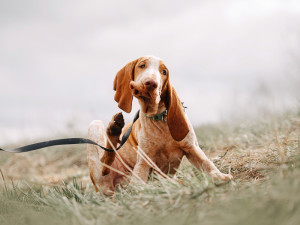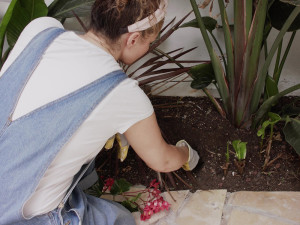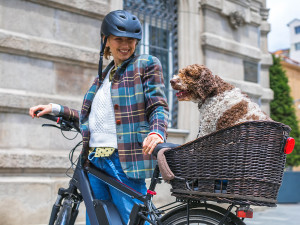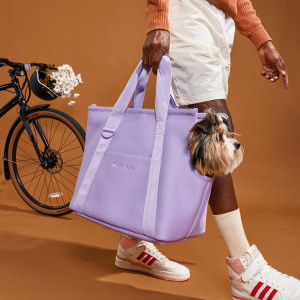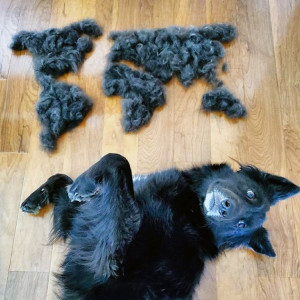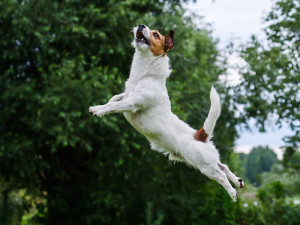How to Be an Eco-Friendly Pet Parent
Reducing your paw print can seem daunting. Consider these simple tips.
Being a pet parent comes with great responsibility — not just for making sure they don’t chomp on poisonous plants or follow their prey drive over the fence — but, you know, for ensuring their care doesn’t cause negative long-term environmental impacts. Finding eco-friendly options when you shop, eat, clean, work, and play not only helps preserve the planet for future generations, it makes your environment safer and healthier — for you, your pup, and all the other creatures on the planet — right now.
So, to inspire better choices, here are a few ideas to help you become a more eco-conscious pet person.
Trick question: All dogs are perfect! But find out which type is the best fit for you.
Eco-friendly cleaning for you and your pet.
From cleaning with natural substances to building with resource-smart materials, there are many ways to keep a greener, pet-safe home. Start small. Clean with traditional substances, such as beeswax polish, vinegar, baking soda, and lemon juice — they’re effective and safe.
Vinegar, one of the oldest (and least expensive) cleaning substances available, is perfect for “green” cleaning. Among its many virtues, it can be used to:
Clean food and water bowls. Cut grease and slipperiness from spit by rinsing dishes and bowls in a vinegar and water solution.
Mop floors. Mix 1/2 cup to 1 gallon of water.
Keep drains flowing. Pour 1 cup of baking soda and 3 tablespoons of vinegar into the drain, let sit for a while (overnight is best), and flush with boiling water.
You can remove pet odors, too.
Baking soda is an awesome odor-eliminator for more than just those strange smells in the fridge. Tackle canine-created aromas in your carpet by sprinkling baking soda on the surface, waiting 15 minutes (or longer for strong smells), then vacuuming. You can do the same with your pet’s bedding. (By the way, running only full loads of pet towels and bedding can save up to 3,400 gallons of water a year.)
Pet accident on a rug or carpet? Soak up as much as you can, wash the area with club soda, and let dry. Then, sprinkle with baking soda, wait a bit, and vacuum. (Test this technique on an out-of-the-way spot to be sure it won’t discolor your carpet.)
How much do you spend on your pet per year?
Avoid toxic grooming products to protect waterways.
When washing your pet, use organic and non-toxic grooming products, with ingredients such as shea butter and other natural ingredients. Try green-grooming with baking soda. Not only are many pet-grooming products harsh on your pet’s skin, but their ingredients can also be harmful to our oceans and wildlife when washed down the drain.
Some portion of the grooming products you use will end up in your pet’s belly and wash into waterways. Avoid products containing sodium lauryl sulphate (SLS) or synthetic fragrances, as these have been proven to negatively affect marine life by toxifying the water. Use shampoos and conditioners with nontoxic, organic, and biodegradable ingredients and free of coloring, preservatives, and fragrance. Bonus points for shampoo bars that cut down on plastic waste.
Go chemical-free.
Did you know that the greaseproof linings on pet-food bags may be a significant dietary source of PFCs? Look for food that comes in bags with untreated aluminum foil liners. Also, don’t use pesticides or fungicides, or choose to use them only sparingly and after all else has failed.
And here’s the depressing finale: vacuum, vacuum, vacuum. While you’re at it, experts recommend dusting once a week with a damp cloth. Less dust equals lower exposure for everyone in the household, no matter how you cut it.
Many environmental health and veterinary experts believe that chronic exposure to the synthetic industrial pollutants, such as PFCs and PBDEs, used in flame retardants and stain-repellants that end up in house dust, may be at least partially responsible for skyrocketing cancer rates in dogs these days.
That includes flea removal products.
Fleas make our pets so miserable that we’re often tempted to reach for the chemicals. The Environmental Protection Agency (EPA) issued warnings about adverse health reactions in pets and children exposed to many topical flea-and-tick preparations as well as to flea collars containing propoxur. There is an alternative — a natural, albeit proactive, way to control these pests, according to Gina Solomon, a senior scientist at the Natural Resources Defense Council (NRDC).
Bathe your dogs every two weeks (lather drowns fleas; leave it on for three to five minutes). For cat-specific flea prevention, here’s a great resource.
Wash your pets’ bedding regularly.
Vacuum carpets every week to remove flea eggs.
Use a flea comb daily. It works!
For a complete breakdown of good, bad, and ugly flea-and-tick control methods, check out NRDC’s GreenPaws fact sheetopens in new tab.
Protect the planet from your pup’s poop.
Keep pet waste out of landfills and waterways. Want to make a dog-loving environmentalist’s heart sink? Collect dog poop in non-degradable plastic and pitch it into the garbage. Or worse, leave it; uncollected waste is not only a source of bacteria, but also may contain chemicals from canine medications that can be washed into local waterways. Luckily, there are other options.
Consider installing an underground pet-waste digester. These devices, such as the Doggy Dooley, work like small septic systems and involve minimum hassle. Find step-by-step instructions for making and installing a DIY version pet waste digester. Some municipalities do their part. If you live in a progressive enclave, such as Cambridge, Massachusettsopens in new tab, your dog’s poop might be converted to methane and used as a power source. .
Think about sticking local.
Choose local walks over those that require engine-fueled transport. While it’s great to explore new places with your dog, driving in your car or catching the train or bus will add to the release of carbon emissions, detrimentally affecting the environment.
The above modes of transport, in addition to planes, is why transport is one of the top five biggest carbon polluters worldwide. Avoiding these when you can makes a big difference to your personal carbon footprint and helps reduce levels of carbon in the atmosphere, which directly contribute to global warming. So, skip the car for errands and train your dog to ride in a cart or basket, and take your bike.
Choose products safe for your pet and the planet.
Livestock farming, in particular rearing cows, is a huge contributor to greenhouse gases. Swapping beef-based food for other protein-based ingredients, such as chicken, turkey, and grains can help reduce this environmental impact. These alternatives, while better for the environment, are also much leaner, providing the right nutrients for your canine, meaning they will remain healthy whilst protecting the planet, too. Consider feeding your pet organic, natural, locally sourced food in ceramic or stainless steel bowls. Avoid plastic, which can leach chemicals.
You can also reduce your pet’s environmental impact by swapping out plastic-based toys for those made from other materials. Seek out safe, planet-friendly toys without preservatives, toxic metals, chemicals, or latex that cats or dogs can absorb when they lick and chew. For example, sustainably sourced rope, jute, and hemp are brilliant, as they are not only kind to the planet and biodegradable, but they’re also durable materials, saving you money in the long run.
Don’t forget the 3 R’s of recycling
Reduce:
Avoid pet products with unnecessary packaging and skip disposable products altogether. The pet products industry is filled with a disappointing array of convenience items, from food-bowl liners and shrink-wrapped chews to toothbrushes preloaded with toothpaste for one-time use. So think “durable” for things like plastic flea combs that break easily and choose a metal comb that will last and save money in the long run.
When traveling, carry your dog’s water in your own aluminum, stainless-steel container, or dog-travel water bottle. Americans use 3.3 million plastic bottles every hour but recycle only one in five.
Reuse:
One man’s trash is one pet’s treasure. For example, take the humble but worn-out yoga mat. It has many uses beyond keeping you from sliding out of position in downward dog. Cut out a square to use as a placemat that will catch splashes and keep food dishes in place; roll it up as a draft stopper (your old pup will thank you); if you have wood or tile floors, use it like a throw rug to provide your older pet with safe footing; or slice it to create safety treads for slippery stairs. Convert old dishtowels into dog toys by tying a knot at the center.
Recycle:
Look for manufacturers of dog and cat beds, collars, and leashes that incorporate second-life materials, such as reprocessed cotton filler or fleece made from recycled plastic bottles. Seek out plant-friendly companies with proven commitments to recycling packaging materials and waste products on the production end. Collect your dog’s fur and donate to pick up oil from oil spills.
Making these sustainable swaps will ensure you are becoming an eco-conscious pet parent while keeping your pup happy and healthy.
